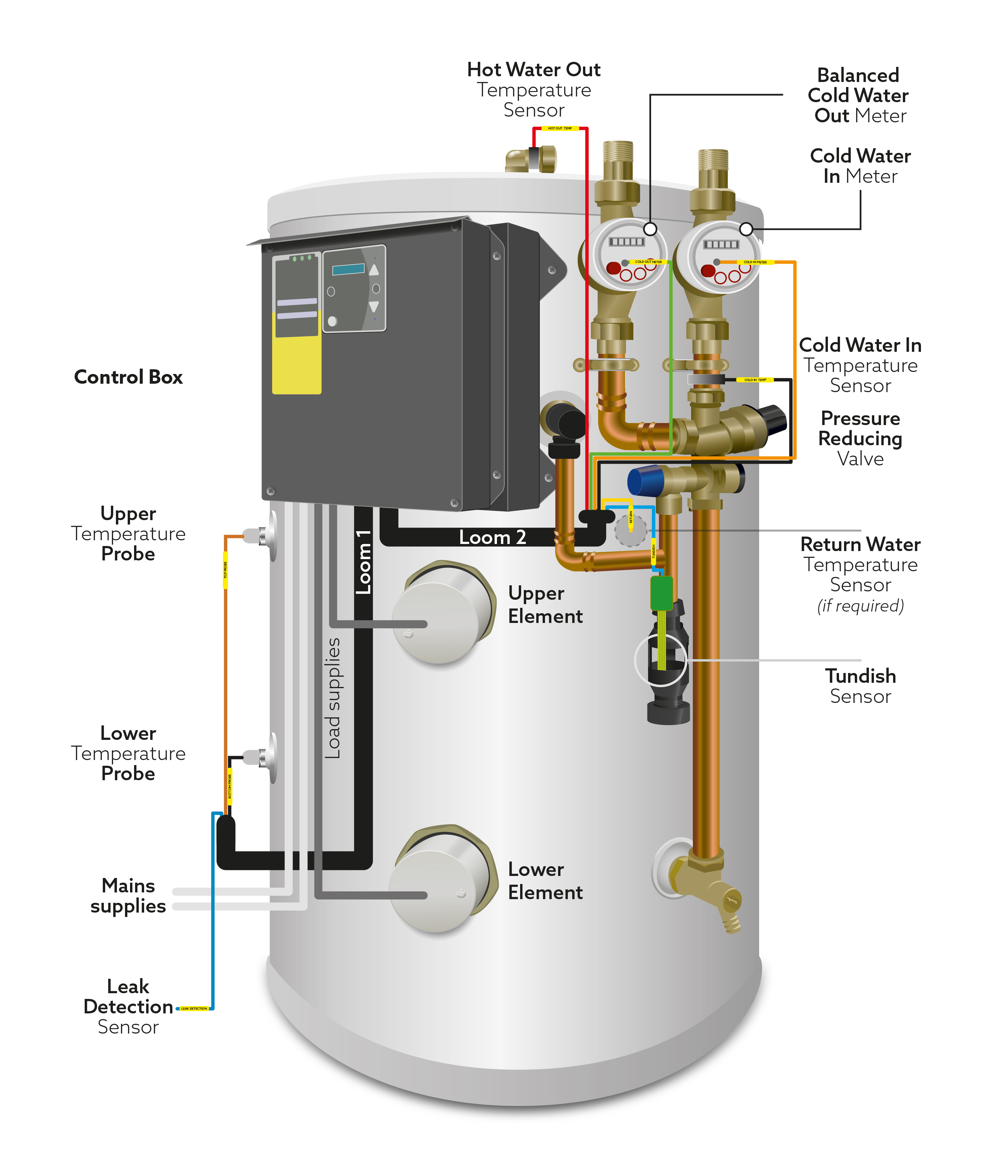
Student accommodation properties typically host between 250-500 residents. Many of these buildings have multiple cylinders that heat water locally and supply groups of rooms.
Cylinders are generally plumbed in, then locked in a dark tank cupboard. Only seeing the light of day when there is a complaint about a lack of hot water.
There are many and varied issues with water cylinders. For maintenance teams, identifying them, before locating and fixing them, is time consuming and costly. Older systems can become a game of ‘whack-a-mole’ – as one issue is resolved, others spring up. Problems cost time and money and are disruptive for room occupants!
The biggest problem with water heating, is that you don’t know which problems you have or where they are.
Managers have come to appreciate, with space heating in student dwellings, that monitoring and control at point-of-use is the most effective way to manage consumption. The more data they have the better the management strategies. Even minimal savings per room soon become significant when multiplied by 500 occupants. When applied to water heating there are many other advantages too.

Problem solving
Most issues occur because we simply don’t know what is happening in the system e.g. Volume of water entering; Water temperature within a tank; Leak/wastage; Flow through pipes; and tap temperature. Gathering this information requires several monitoring points with sensors and meters collecting relevant data.
The new generation of ‘smart’ tanks have such monitoring capabilities. Pre-plumbed and pre-wired with factory-fitted on-board controls means there is a consistency of quality in the tanks and a familiarity across a site. This facilitates time and cost-effective installation, and maintenance.
When connected to a centrally controlled energy system, data is collected and fed to a hub where energy, maintenance, and health and safety teams can see precisely what is happening across their system. They are also alerted to unusual usage patterns, leaks, and faulty components.
Making savings
Water heating efficiency-analysis can be categorised over three levels.
Firstly, the low hanging fruit. Cylinders are ‘a fit-it and forget-it’ product and many are simply past their best and need changing. A replacement model will immediately bring efficiency, whether it has the monitoring capabilities of a ‘smart’ tank or not.
The second level can be termed ‘pro-active analysis’ savings. The data available from close monitoring of both energy and water consumption provides detail, like never before. With this information, a stricter heating strategy enables very accurate temperature control, along with greater maintenance efficiencies.
The third level of savings are the nuances. As part of the IoT, pipe sensors detect water flow and temperature at point-of-use. This pinpoints a dripping tap or a faulty toilet cistern.
Safety benefits
Water safety is a subject where greater knowledge really pays dividends. What is the temperature of water - in the tank? - When it leaves the tank? - At the outlet? Is there a risk from Legionella? Is the Water Safety Plan being adhered to? Can this be evidenced? Could taps or showers present a scolding hazard?
These questions and many others are answered when a water system is monitored absolutely.
Customer relations
Remote monitoring reveal’s accurate fault-finding locations, speeds up the reparation process, and encourages a scheduled maintenance regime. All of which require less interaction with, and interruption of, occupiers.
If you know the problem, it can be dealt with. But currently, those responsible for water heating efficiency, like their cylinders, are in the dark!

